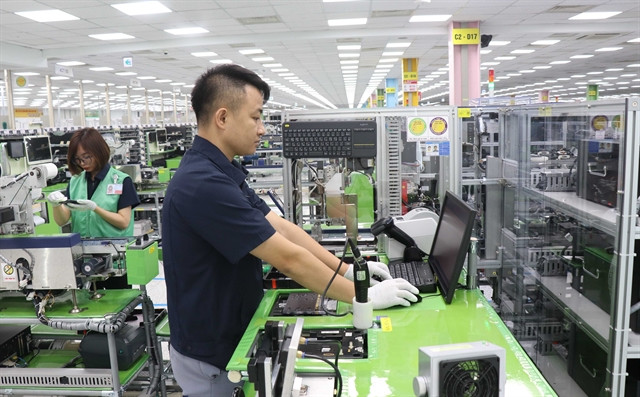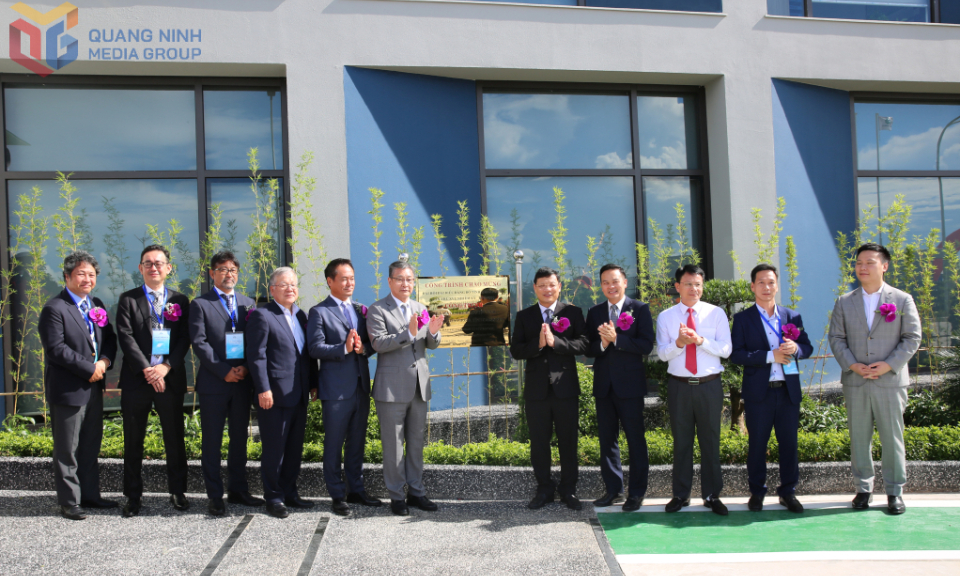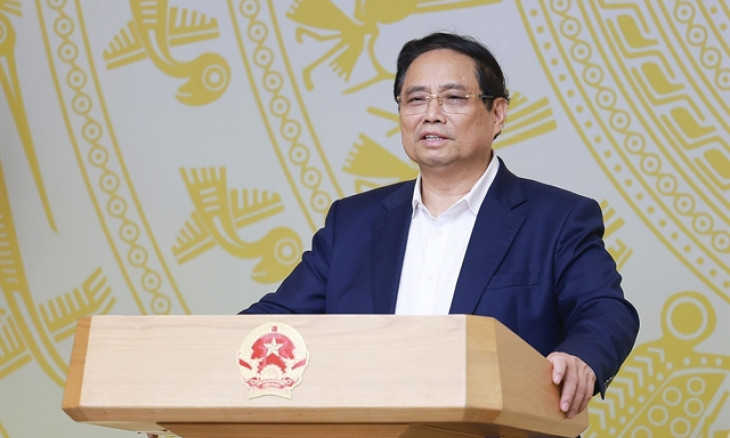Việt Nam's industrial production surges in 11 months
The GSO said enterprises have made efforts to find orders to complete the year's production and business plans and prepare goods to serve consumption at the end of the year so industrial production in November continued a positive trend.
Việt Nam’s index of industrial production (IIP) went up 1 per cent in the first 11 months of 2023 with the November IIP alone rising 5.8 per cent year-on-year, according to the General Statistics Office (GSO).
The GSO said enterprises have made efforts to find orders to complete the year's production and business plans and prepare goods to serve consumption at the end of the year so industrial production in November continued a positive trend.
During 11 months, the manufacturing and processing sector rose 1.1 per cent, electricity generation and distribution (3.2 per cent), and water supply and sewerage and waste management (4.9 per cent) compared to the last year's same period. The mining sector, meanwhile, was down 2.8 per cent year-on-year.
Key industrial sectors registering increases in IIP during the period include rubber and plastic products, up 11.8 per cent, metal ore mining (11 per cent), tobacco (10.5 per cent), chemicals and chemical products (8.6 per cent), and food production and processing (6.2 per cent).
Some major goods also saw positive IIP growth such as sugar production rose 35 per cent; mixed N.P.K fertiliser (14.2 per cent); dairy products (8.4 per cent); TVs (7 per cent) and chemical paints (6 per cent).
Meanwhile, the IIP of some manufacturing industries decreased such as other means of transport (9 per cent); motor vehicles (3.6 per cent); crude oil and natural gas exploitation (4.2 per cent); other non-metallic mineral (3.9 per cent); electronic product manufacturing, computers, and optical products (1.3 per cent).
According to the GSO, 50 cities and provinces posted year-on-year growth in their IIP during the period, while 13 saw declines.
Some localities have seen a fairly high increase in the IIP due to a sharp increase in the processing and manufacturing industry, electricity production, and distribution industry including Đắk Lắk (33.6 per cent), Bắc Giang (20.5 per cent), Phú Thọ (17.6 per cent), Nam Định (15.5 per cent), and Hải Phòng (13.5 per cent).
The number of workers working in industrial enterprises as of November 1, 2023, increased by 1 per cent compared to the same time last month and decreased by 0.2 per cent compared to the same time last year.
Particularly, the number of workers in the State-owned sector and the non State-owned sector decreased by 1.4 per cent and 2 per cent year-on-year, respectively. The number of workers in the foreign-invested sector surged by 1 per cent compared to last year's corresponding period.
November PMI falls
The S&P Global Vietnam Manufacturing Purchasing Managers' Index (PMI) dropped to a five-month low of 47.3 in November from 49.6 in October. The index signalled a solid monthly deterioration of business conditions in the sector, extending the current sequence of decline to three months in the process.
The S&P Global said manufacturers faced a renewed reduction in new orders during November, thereby ending a three-month sequence of growth. The pace of decline was solid and the most marked since May.
"Weaker customer demand was reportedly behind the fall in new business. Waning demand extended to international customers as new export business decreased for the first time in four months."
"With new orders falling and economic conditions challenging, firms scaled back production again. Output has now decreased in each of the past three months. Moreover, the rate of contraction accelerated sharply and was the most pronounced since May."
It said cost pressures picked up again midway through the final quarter of the year, with the rate of inflation hitting a nine-month high.
Currency weakness reportedly led to higher prices for imported items, while fuel, oil, and sugar were among the specific inputs increasing in cost over the month. In turn, firms raised their selling prices for the fourth successive month, the S&P Global said.
It added that falling new orders, reduced production requirements, and a further drop in backlogs of work meant that manufacturers looked to scale back their purchasing activity and employment in November.
Andrew Harker, economics director at S&P Global Market Intelligence, said: "Demand weakness, both domestically and in international markets, led to reduction across the Vietnamese manufacturing sector in November."
"With new orders down, firms scaled back their production, employment, and purchasing activity, plus limited inventory holdings."
"The renewed fall in new business was partly attributed to some resistance among customers to price rises. With firms' input costs increasing to the largest extent since February, it may prove challenging for manufacturers to price competitively in the months ahead," he said, adding that the sector therefore looks set to head into 2024 in a pretty subdued fashion, hoping for a pick-up in demand conditions to occur soon.






